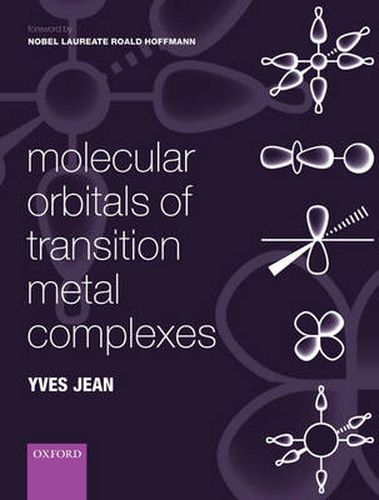Readings Newsletter
Become a Readings Member to make your shopping experience even easier.
Sign in or sign up for free!
You’re not far away from qualifying for FREE standard shipping within Australia
You’ve qualified for FREE standard shipping within Australia
The cart is loading…






This book starts with the most elementary ideas of molecular orbital theory and leads the reader progressively to an understanding of the electronic structure, geometry and, in some cases, reactivity of transition metal complexes. The qualitative orbital approach, based on simple notions such as symmetry, overlap and electronegativity, is the focus of the presentation and a substantial part of the book is associated with the mechanics of the assembly of molecular orbital diagrams. The first chapter recalls the basis for electron counting in transition metal complexes. The main ligand fields (octahedral, square planar, tetrahedral, etc.) are studied in the second chapter and the structure of the d block is used to trace the relationships between the electronic structure and the geometry of the complexes. The third chapter studies the change in analysis when the ligands have pi-type interactions with the metal. All these ideas are then used in the fourth chapter to study a series of selected applications of varying complexity (e.g. structure and reactivity). The fifth chapter deals with the isolobal analogy which points out the resemblance between the molecular orbitals of inorganic and organic species and provides a bridge between these two subfields of chemistry. The last chapter is devoted to a presentation of basic Group Theory with applications to some of the complexes studied in the earlier chapters.
$9.00 standard shipping within Australia
FREE standard shipping within Australia for orders over $100.00
Express & International shipping calculated at checkout
This book starts with the most elementary ideas of molecular orbital theory and leads the reader progressively to an understanding of the electronic structure, geometry and, in some cases, reactivity of transition metal complexes. The qualitative orbital approach, based on simple notions such as symmetry, overlap and electronegativity, is the focus of the presentation and a substantial part of the book is associated with the mechanics of the assembly of molecular orbital diagrams. The first chapter recalls the basis for electron counting in transition metal complexes. The main ligand fields (octahedral, square planar, tetrahedral, etc.) are studied in the second chapter and the structure of the d block is used to trace the relationships between the electronic structure and the geometry of the complexes. The third chapter studies the change in analysis when the ligands have pi-type interactions with the metal. All these ideas are then used in the fourth chapter to study a series of selected applications of varying complexity (e.g. structure and reactivity). The fifth chapter deals with the isolobal analogy which points out the resemblance between the molecular orbitals of inorganic and organic species and provides a bridge between these two subfields of chemistry. The last chapter is devoted to a presentation of basic Group Theory with applications to some of the complexes studied in the earlier chapters.